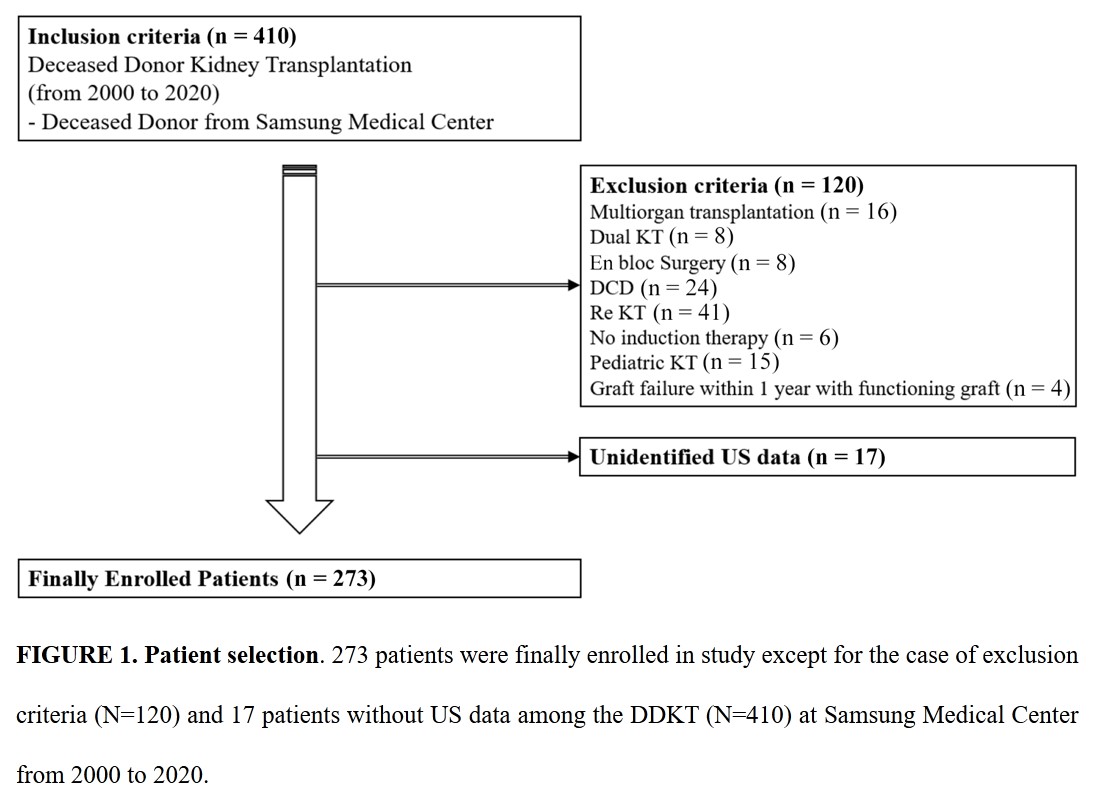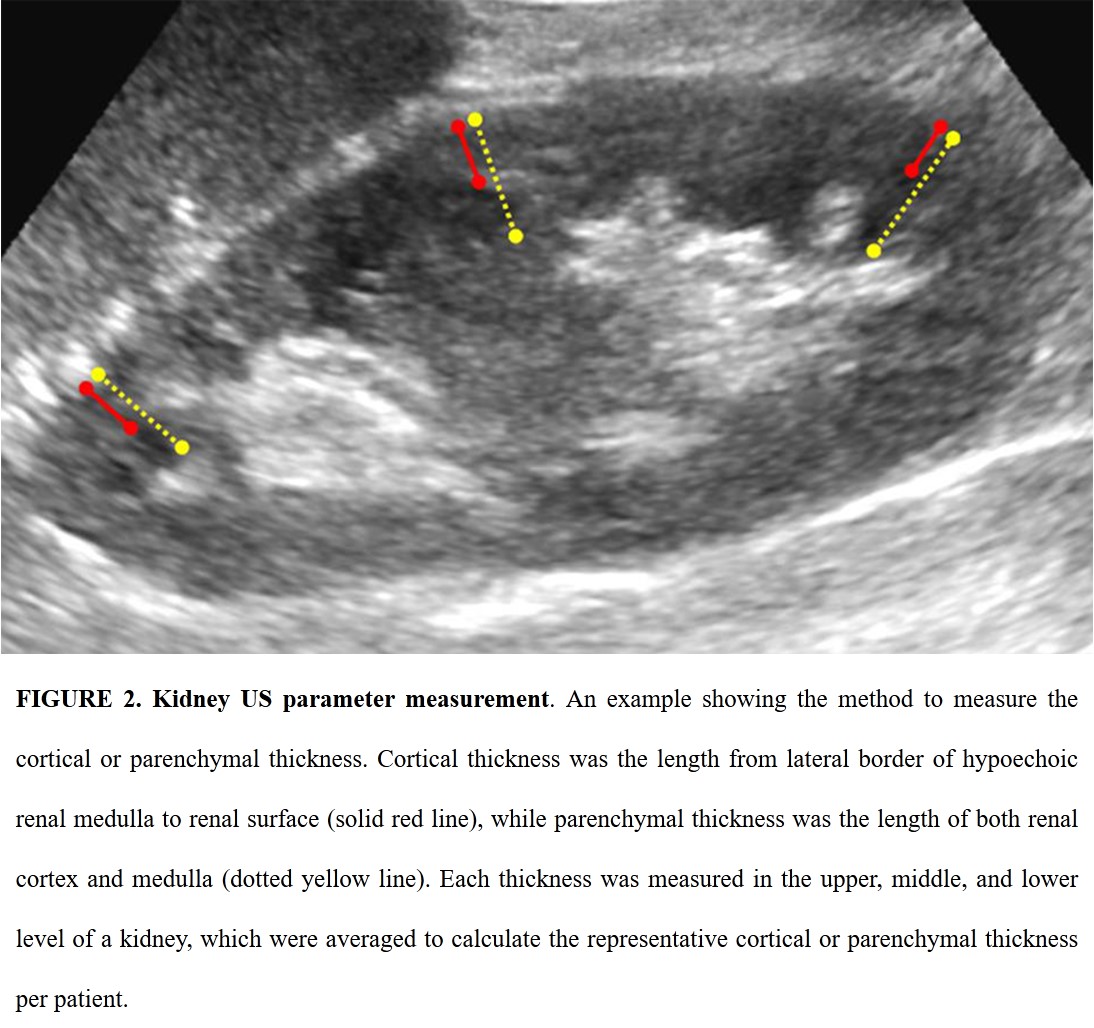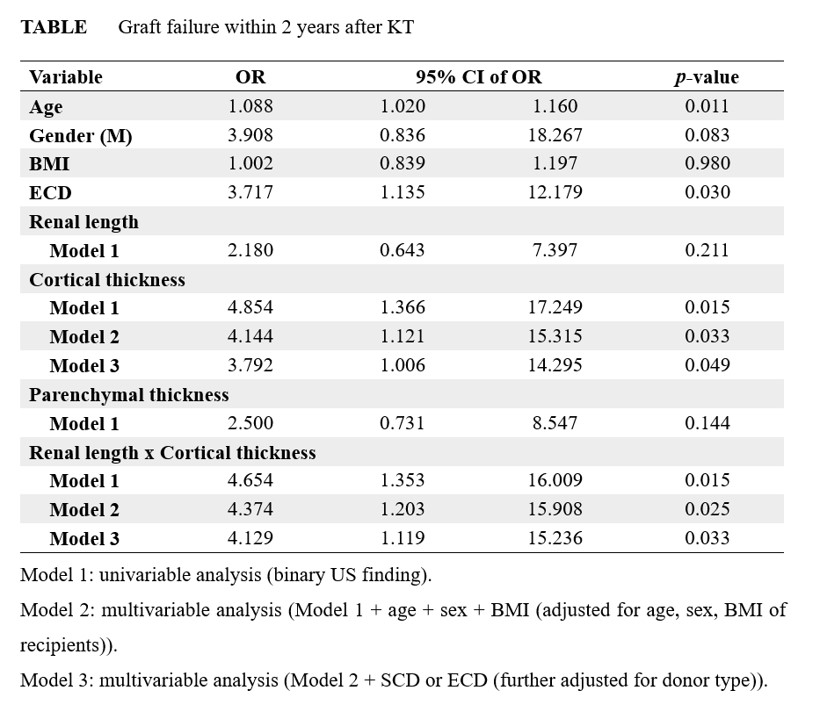Ultrasound Assessing Donor Kidney Quality in Deceased Donor Kidney Transplantation
1Surgery, Samsung Medical Center, Seoul, Korea, Republic of, 2Radiology and Center for Imaging Science, Samsung Medical Center, Seoul, Korea, Republic of
Meeting: 2022 American Transplant Congress
Abstract number: 732
Keywords: Donors, marginal, Graft survival, Kidney transplantation, Ultrasonography
Topic: Clinical Science » Kidney » 32 - Kidney Deceased Donor Selection
Session Information
Session Name: Kidney Deceased Donor Selection
Session Type: Poster Abstract
Date: Saturday, June 4, 2022
Session Time: 5:30pm-7:00pm
 Presentation Time: 5:30pm-7:00pm
Presentation Time: 5:30pm-7:00pm
Location: Hynes Halls C & D
*Purpose: We evaluated the role of functional kidney volume using donor kidney ultrasound (US) alone or in combination with other donor factors and parameters appropriate for kidney grafts in deceased donor kidney transplantation (DDKT)
*Methods: A total of 273 patients who underwent deceased donor kidney transplantation from 2000 to 2020 were enrolled after adjusting for exclusion criteria and donors were recruited only at the Samsung Medical Center. Estimated GFR was the laboratory value used to evaluate kidney function. To binarize each kidney US character, we selected an optimal cut-off value for eGFR less than 30 within 1 year after KT using Youden’s index among values with specificity above 60%. Cox regression analysis was performed for eGFR less than 30 within 1 year after KT and graft failure within 2 years after KT
*Results: We found all the US findings were risk factors for eGFR less than 30 within a year after KT. The odds ratios of renal length, cortical thickness, parenchymal thickness and the product of renal length and cortical thickness were 6.417cm (95% CI; 1.332-28.361, P = .020), 10.146cm (95% CI; 1.934-53.217, P = .006), 6.665cm (95% CI; 1.540-28.852, P = .011) and 14.700 (95% CI; 2.805-77.030, P = .001), respectively. Cortical thinning and decreased product of renal length and cortical thickness were risk factors for graft failure within 2 years after KT, with odds ratios 3.792 (95% CI; 1.006-14.295, P = .049) and 4.129 (95% CI; 1.119-15.236, P = .033), respectively
*Conclusions: Based on these results, US findings of donor kidney can be predictors of short-term prognosis after KT and used to facilitate deceased donor selection. However, US findings alone do not represent a gold standard, and are meaningful as a factor constituting extended criteria of DDKT.
$$MISSING OR BAD TABLE SPECIFICATION {8F5E66F6-F576-4A34-9C8A-E21E71E6A7BE}$$
To cite this abstract in AMA style:
Yun S, Lee K, Park S, Park J. Ultrasound Assessing Donor Kidney Quality in Deceased Donor Kidney Transplantation [abstract]. Am J Transplant. 2022; 22 (suppl 3). https://atcmeetingabstracts.com/abstract/ultrasound-assessing-donor-kidney-quality-in-deceased-donor-kidney-transplantation/. Accessed December 10, 2025.« Back to 2022 American Transplant Congress



